White Lucknow Chikankari Sarees in India
- Trusha Kenil
- Mar 13
- 4 min read
Updated: Mar 18
Introduction

The authentic Indian embroidery style known as Chikankari and it was enlarged in Lucknow, which is in Uttar Pradesh, India. Chikankari is still popular today and has been a part of Indian culture for a hundred years. Chikankari saree involves embroidery of several figures and designs on materials. In this blog you'll be aware about Chikankari sarees and much more.
The pinnacle of fashion is without a doubt a White Lucknow Chikankari sarees. A variety of chikankari embroidery has been incorporated into the festive, professional, and everyday wardrobes of women all over the world. This art has unquestionably won a special place in the hearts of everyone, whether it be in the form of traditional sarees for family gatherings, a subtle saree for office wear or gifting, or heavy Chikankari outfits for newlyweds.
History of white Lucknow Chikankari Sarees

Chikankari embroidery has its roots in to the Mughal era, it is believed that Chikankari sarees were introduced by Nur Jahan, the wife of Jahangir, who was the King in the 16th century. She has very unique artistic taste, and that is why she is known for her twisted embroidery styles. Initially, delicate floral patterns were created with white threads using the technique on muslin cloth. Colored threads and fabrics were incorporated into the art over time, preserving its traditional appeal.
Chikankari was a popular embroidery style among the celebrities and it is also popular among well settled families and in this modern generation it is being popular among youngsters too. The Farsi word "Chikan," which means embroidery, is the origin of the term "Chikankari." By bringing Persian artisans to India, the Mughal emperors introduced Chikankari for the first time in Lucknow. Over the time, Chikankari grew as a approved embroidery style among the internal technician. Now a days, Chikankari is a famed embroidery method in India and is frequently used to enrich kurta- suits, sarees, and other Indian outfits.
The Technique of Chikankari work
Although Chikankari art was initially created using white thread on white fabrics, it has since expanded to include a wide range of color schemes, particularly pastels. The thread motifs would stand out on fabric of the same color because of how beautiful this extremely intricate embroidery art is, yet they would blend in seamlessly with the base. Chikankari art is a form of tonal embroidery where different shades of a single colour create depth in the design, as can be seen beautifully portrayed in many of our White Lucknow Chikankari sarees.
Chikankari is a delayed and deep creative process which first involves block printing the patterns onto the fabrics, followed by stitching. The embroidery motifs can change and are often made using multiple stitches to give the fabric depth and texture. Once the embroidery is complete, it goes into the finishing stage where the loose threads are trimmed and the fabric is washed, starched and ironed.
Types of Chikankari saree
1. Georgette Chikankari Sarees:
Georgette Chikankari sarees are best for summer wear because Georgette Chikankari sarees are light weighted and loose and that's why it is also easy to wear for all. The embroidery styles enrich the look of Georgette chikankari.
2. Silk Chikankari Sarees:
These sarees, which are made of pure silk, are ideal for formal occasions. These sarees are come in detailed embroidery designs and also come in various colors.

3. Cotton Chikankari Sarees:
Cotton Chikankari Sarees are ideal for daily wear because of it's pure cotton fabric and often these type of sarees are accessorized by simple chikankari embroidery. These sarees are come in a various colors.

4. Net Chikankari Sarees:
Net Chikankari sarees are perfect for Party wear and also ideal for any other special occasions. Net Chikankari sarees enrich the look by its fabric which is made by net and its Embroidery styles.

Types Of Chikankari Embroidery Techniques
Phanda: Chikankari motifs use a small, circular knot stitch to embroider the centers of flowers. It looks like a French knot, with murri being rice-shaped and phanda being millet-shaped.
Hool: In Chikankari embroidery stiches Hool work is also known as Eyelet stitch. This stitch is often used to form the center of a flower.
Jaali: This work involves The threads of the fabric are carefully manipulated to create a pattern that looks like a net or mesh. Jaali work is Using a needle to separate the warp and weft threads creates an open, mesh-like design without compromising the integrity of the fabric.
Murri: Murri work in Chikankari embroidery, also known as the French knot, involves creating small, elevated, decorative knots or dots on the fabric using a needle and thread, adding texture and depth to the design.
Khatau: In the embroidery stitches Khatau stitch is normally used to create floral motifs.
Bakhiya: Bakhiya is a type of stitch in which the embroidery is done from the back of the fabric, giving the front of the garment a subtle shadow effect.
There are many more Chikankari embroidery techniques like Darzdari, Pechani, Bijli, Meharki, Chanapatti, Rozan, Tepchi, Jora, Keel kangan, Bulbul, Baalda, Ghaspatti, Makra, Kauri, Hathkadi, Banjkali, Sazi, Karan, Kapkapi, Taj Mahal, Zanzeera, Rahet, Banarsi, Turpai, Madrazi, Bulbul-chasm, Janjeera, Kangan, Dhania-patti, Sidhaul and Ghas ki patti etc.
How you can care for your Chikankari saree
1. If you wash the garment yourself at home, you should not wring it or line dry it. It only needs to be covered with a clean towel and left to dry until the water has been absorbed.
2. It is highly recommended that you wash with your hands with a mild detergent or dry clean your Chikankari attire to prevent damage to the delicate embroidery. Bleach is not allowed.
3. Chikankari garments should always be ironed in the opposite direction and Iron your Chikankari saree on a low heat setting. This protects the embroidery from direct heat. Additionally, avoid steam ironing due to the possibility of thread damage from moisture.
4. To protect your Chikankari saree store it in a cool place. Because of this, there will be few creases, which will help the embroidery remain intact.


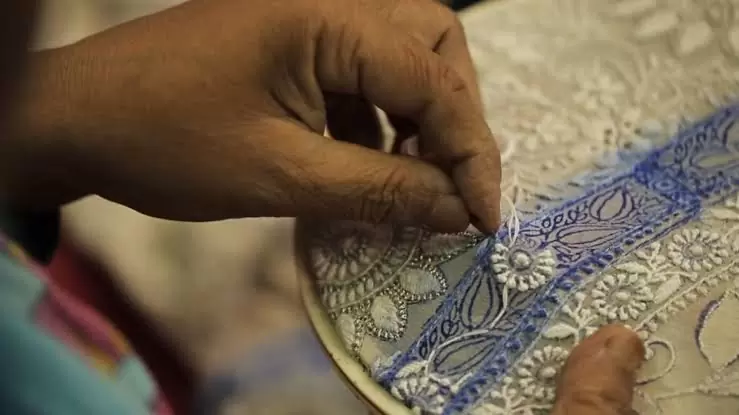




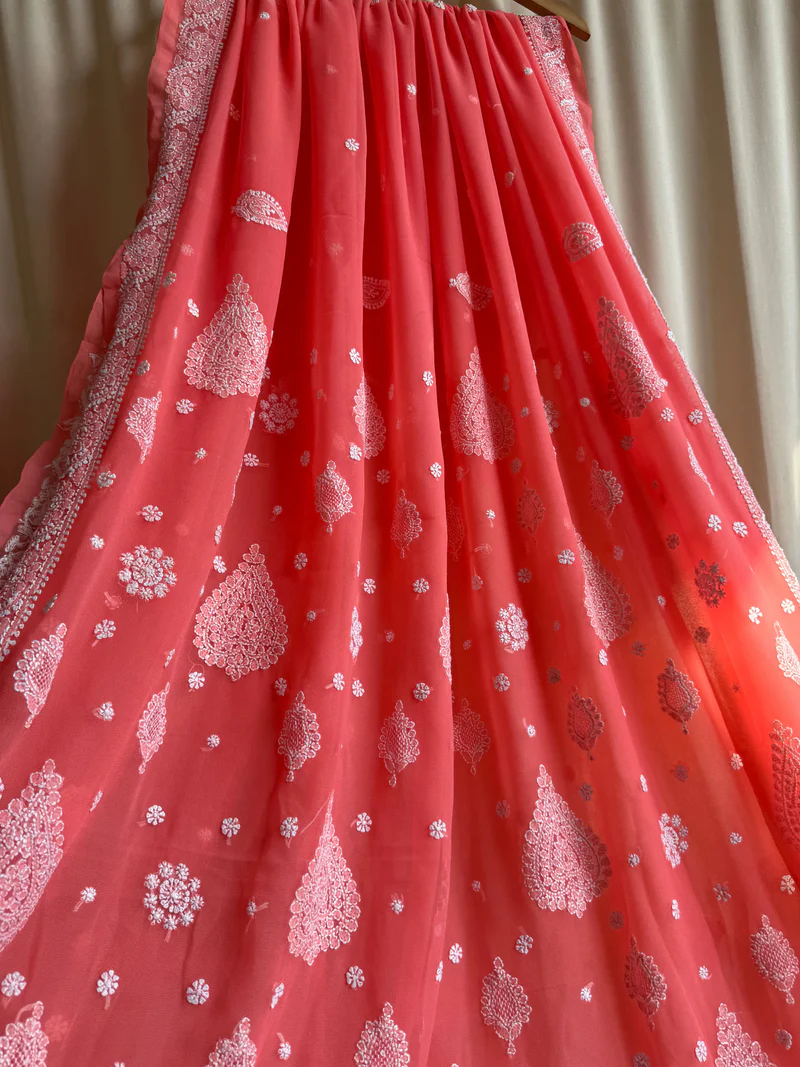
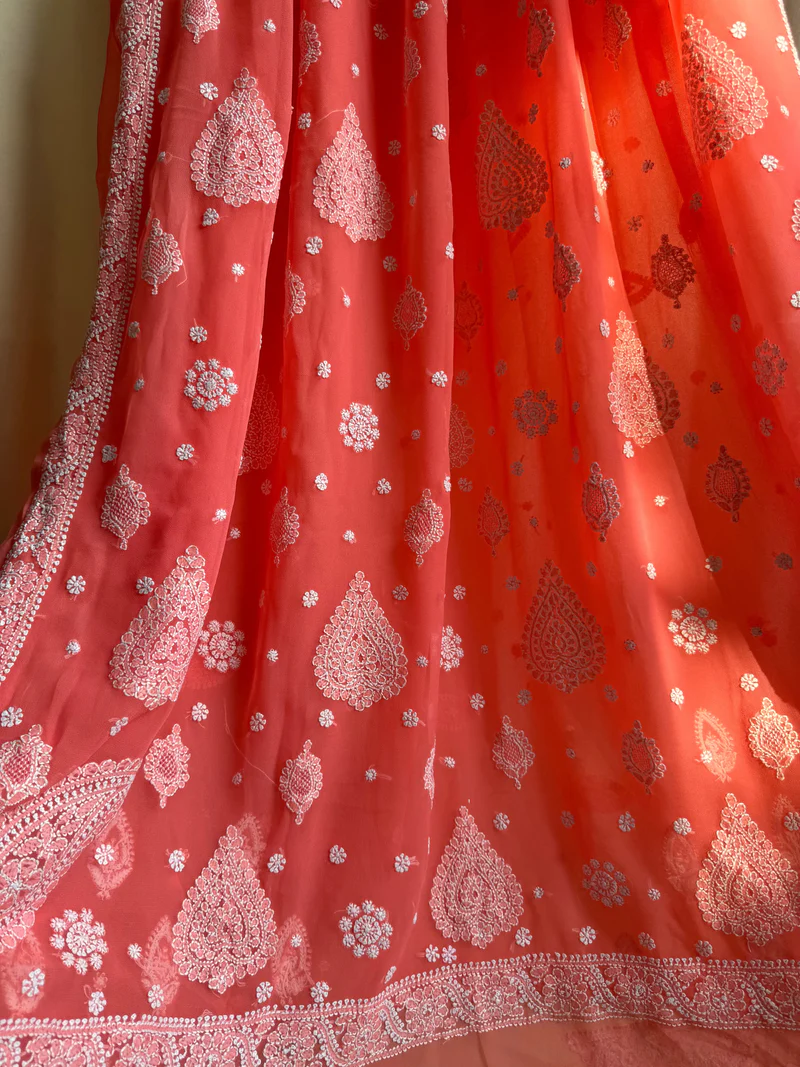
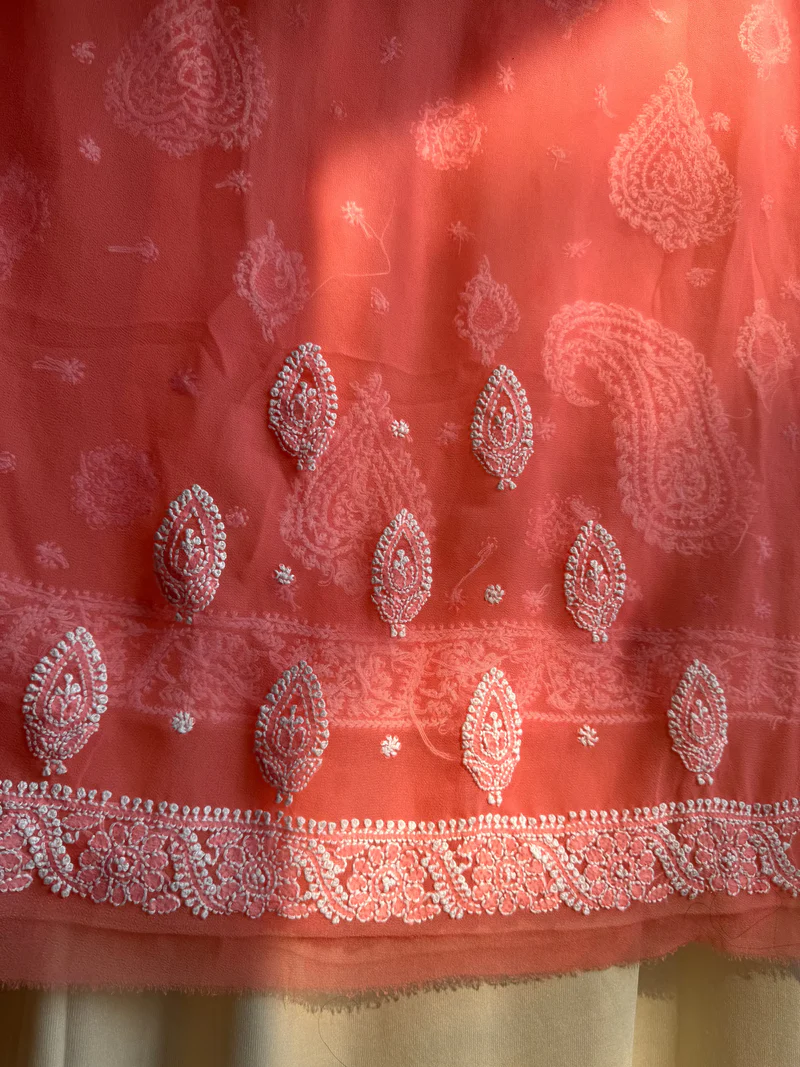






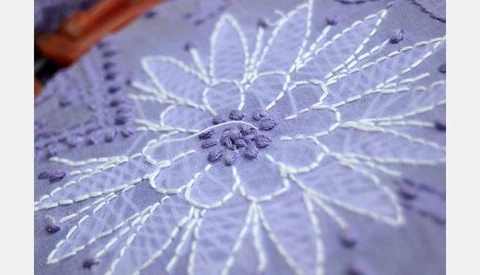




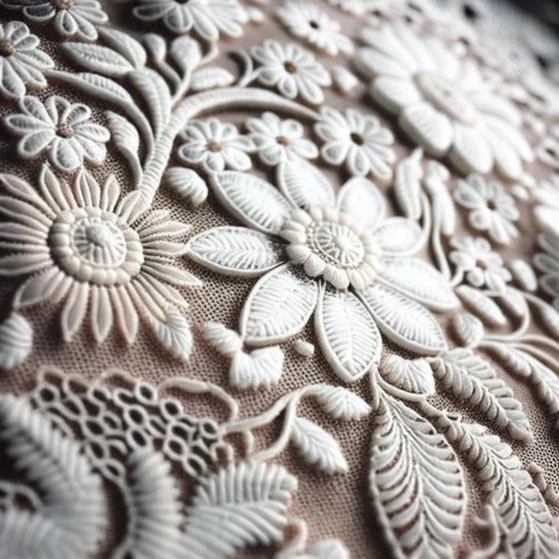



Comments